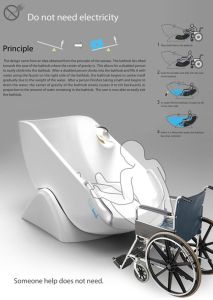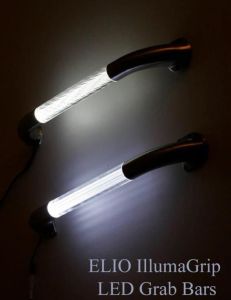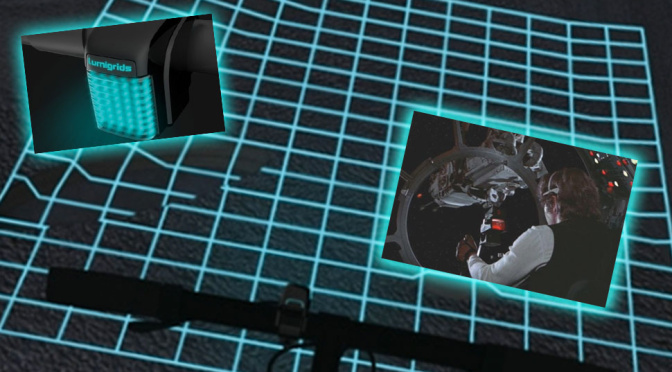The Difference between Universal Design and the ADA
Universal Design, What is it?

Universal design makes products, houses, buildings and spaces easier, safer and more user-friendly for the widest range of people.
Disability Smart Solutions consults with manufacturers and inventors of universal design products. We often recommend universal design solutions in our ADA Accessibility Surveys and Compliance Reports. Please contact us to review your product.
Lumigrids are a great example of a product that solves a problem that young able-bodied people often don’t think about. The small mounted grid light projects a path on the ground ahead showing the location of any uneven surfaces. This example of a universal design tool shows a man riding a bicycle at night. The light becomes an accessibility product when mounted to the front of a walker or wheelchair. The grid can aid people with limited visibility or create a safe path to follow at night. Inventions and ideas like this that might have initially been invented for military use, are part of Universal design.

Universal Design evolved from accessible design to address needs not covered by the ADA, American Disabilities Act.
Universal Design recognizes a wider spectrum of abilities, to create things that are easier for everyone to use.
Universal Design includes the full spectrum of human motion.

Universal Design applies to any product that ranging from appliances to cars, to door handles, to hair brushes, to smartphones.
Universal Design applies to any type of architecture, including homes, public and commercial buildings.

Universal Design for homes helps older adults with Aging In Place products and spaces that are easier and safer to use.
Universal Design for housing, provides accessible design standards that are not included in CODE. Universal Design can apply to the community at large through urban planning, public transit, and New Urbanism.
What is the difference between Universal Design and the Americans with Disabilities Act?
- The ADA, Americans with Disabilities Act is legislation.
- The ADA includes the 2010 ADA Standards for Accessible Design, which are the minimum requirements for accessible buildings and facilities.
- Universal Design is not a regulation.
- The ADA focuses on protecting the civil rights of people with disabilities.
-

Universal design kitchen for a wheelchair user. Elevating sink, dishwasher drawer, microwave drawer, easy reach electrical outlets and lowered surfaces. Universal Design suggests best design practices to meet the needs of a wide range of people.
- The ADA does not apply to single-family housing.

- Universal Design for housing brings accessibility features to single family homes and commercial buildings.
Please share your Universal Design products with us.
Universal Design consultations and product reviews are available by our accessibility experts.
Disability Smart Solutions is full-service ADA Consulting firm offering ADA Compliance Access Surveys, Project Consultation, Post-Compliance Audits, All-Ability Customer Service Training, Undercover Disabled Guest Mystery Shopping, Universal Design Product Review and Keynote Speaking. Please contact us to review your accessibility needs.
